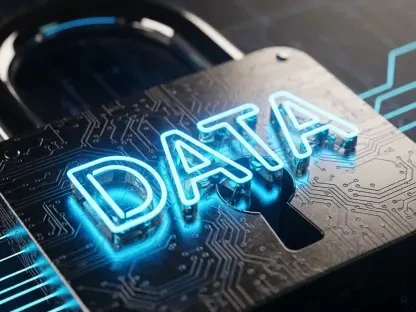Navigating the complexities of federal procurement is crucial for contractors, particularly in understanding how intellectual property (IP) is created, owned, and licensed under government agreements. Mismanagement of IP rights can lead to serious repercussions, including the loss of ownership, competitive disadvantages, or disputes with the government over licensing terms. It is essential to be well-informed to protect innovations while ensuring compliance with government regulations.
Understanding Government’s Interest in IP
One of the most critical elements in managing IP under government contracts is understanding the extent of the government’s interest in intellectual property. There is a common misconception that the government automatically owns all IP developed under a federal contract. However, this is not entirely accurate. Contractors usually retain ownership of their IP, while the government acquires certain license rights to use it.
The extent of these rights largely depends on the funding source for the development of the IP. If the IP is privately funded, contractors retain ownership and can impose limited or restricted rights on the government’s use. This means the government’s rights are primarily limited to internal use and cannot be shared or modified extensively without the contractor’s permission. Conversely, if the IP is fully or partially government-funded, the government typically acquires unlimited rights. Unlimited rights allow the government to use, modify, reproduce, and share the IP freely for any legitimate government purpose. Understanding this distinction is crucial for contractors to protect their IP and prevent inadvertent loss of their proprietary technology.
Distinguishing Between Technical Data and Computer Software
Contractors need to clearly distinguish between technical data and computer software rights, as these have distinct regulatory frameworks and rights allocations. Technical data encompasses recorded scientific or technical information necessary for design, development, and manufacturing processes, such as engineering drawings, blueprints, and manuals. It may include data that describes the physical, functional, and performance characteristics of an item.
On the other hand, computer software includes executable code, source code, object code, algorithms, and related design materials. The rights associated with computer software are often more stringent due to the proprietary nature of programming innovations. By understanding the classification and associated regulatory requirements, contractors can ensure they properly protect their IP and adhere to necessary compliance protocols. This differentiation is essential for managing the development, deliverables, and contractual obligations related to both technical data and computer software.
Proper Marking and Assertion of Data Rights
Preventing the loss of ownership involves proper marking and assertion of data rights. Contractors must use the correct restrictive legends on all deliverables provided to the government. The failure to properly mark deliverables as proprietary can result in the government assuming it has unlimited rights to the data, even if it was developed at private expense. Submitting a data rights assertions table during contract negotiations is a critical step, and this table must be carefully reviewed and validated to reflect accurate rights related to the data.
Additionally, ensuring that all subcontractors and suppliers adhere to proper marking procedures is vital. A breakdown in marking compliance by any party involved in the contract could lead to unintended government access to proprietary information. By properly asserting and marking IP, contractors preserve their ownership rights and prevent the government from inadvertently distributing proprietary data to competitors or other third parties. This proactive approach helps mitigate risks associated with the mismanagement of data rights.
Bayh-Dole Act Compliance
For contractors working on federally funded research and development (R&D) projects, understanding the Bayh-Dole Act is crucial. This Act permits contractors to retain ownership of patents on inventions conceived during government-funded research, subject to certain conditions. However, it also requires contractors to grant the government a nonexclusive, royalty-free license to use the patented invention.
Contractors must disclose any qualifying inventions to the government in a timely manner and make an election to retain title to the invention within a specified period. Moreover, compliance with march-in rights is necessary, which means the government can require the contractor to license the patent to third parties if the contractor fails to adequately commercialize the invention. Failure to adhere to these compliance requirements can result in the government taking ownership of the patent. Understanding and adhering to these stipulations is essential to avoid forfeiture of valuable IP rights and ensure that inventions generated from federally funded research remain beneficial to both the contractor and the public.
Addressing IP Rights in Subcontracts and Teaming Agreements
Addressing intellectual property clauses in subcontracts and teaming agreements is critical for managing IP under government contracts. Neglecting to establish clear IP rights in these agreements can lead to ownership disputes and compliance issues. It is essential to define ownership of IP developed under subcontracts to prevent any ambiguity regarding rights.
Aligning subcontractor data rights assertions with the prime contract’s obligations is another best practice. This ensures consistency in how IP rights are managed throughout the contractual chain. Additionally, subcontractors must mark proprietary data correctly to comply with government regulations and protect the prime contractor’s interests. By ensuring the flow-down of IP rights to subcontractors, prime contractors reduce the likelihood of disputes or unintended government claims on IP developed during contract performance. This alignment fosters a cooperative approach, ensuring that all parties involved understand and adhere to IP rights management, thereby protecting valuable innovations.
Preparing for Government Challenges
Navigating the complexities of federal procurement is crucial for contractors, especially in understanding the nuances of creating, owning, and licensing intellectual property (IP) under government contracts. Mishandling IP rights can result in severe consequences such as losing ownership, facing competitive disadvantages, or engaging in disputes with the government over licensing terms. Being well-informed about IP rights is essential to safeguarding your innovations and ensuring compliance with federal regulations. Contractors need to stay ahead by continually educating themselves on these matters to prevent pitfalls that could compromise their business interests. Familiarity with government policies and proactive management of IP rights will protect your competitive edge and foster a collaborative relationship with federal agencies. Ensuring that your team is knowledgeable about these aspects will help navigate the procurement process smoothly and safeguard your company’s intellectual assets effectively.









